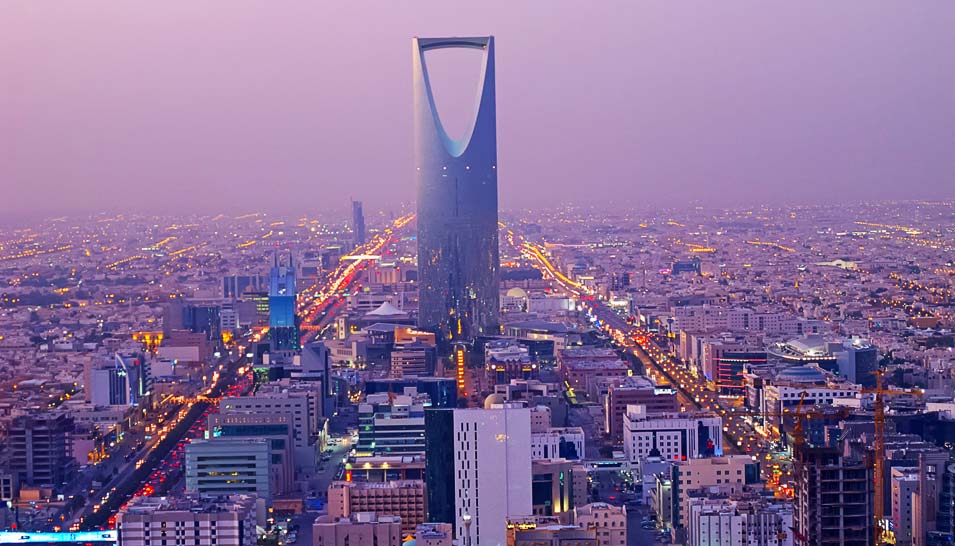
Few people in history have had the impact on their nation that Abdul Aziz ibn Abdur Rahman ibn Faisal al Saud, better known as ibn Saud, had on his. Conqueror, warrior, leader, visionary, commanding in presence, fearless in battle, cunning in negotiations, by force of will he created the modern nation of Saudi Arabia. What George Washington is to Americans, what Ghandi is to Indians, what Simon Bolivar is to Latinos, ibn Saud is all of that and more to the people of Saudi Arabia.
In 1902, at the age of twenty‐three, ibn Saud took his first not‐so‐ tentative step toward greatness. Though badly outnumbered, he led a band of nine armed men in a daring early‐morning raid on Riyadh, then under the control of the rival Al‐Rashid family. Having just overthrown the Al‐Rashid ruler there, he reportedly called out to an assembled crowd, “Who is on my side… Who? Your own amir [prince] is with you again.”
For the next thirty years, ibn Saud continued his campaign of territorial conquest and administrative consolidation, bringing more and more of the Peninsula under his control. Carefully navigating through the treacherous waters of the First World War, he balanced his kingdom’s interests against those of the Ottoman Turks and their Austrian and German allies on the one side and those of the Allied forces, including Great Britain and France, on the other.
The campaign against the Ottomans made famous by T. E. Lawrence’s autobiographical account, Seven Pillars of Wisdom, and by David Lean’s cinematic epic, Lawrence of Arabia, was waged largely on the fringes of the Peninsula, on the outskirts of the Saudi realm. While the House of Saud aided the Allied march against the Ottoman Turks to a degree, it remained largely an observant bystander to the events depicted in that film. An exercise in creative license by its director, the film is not an accurate portrayal of the history of Saudi Arabia. The true history of the kingdom is arguably more colorful.
Throughout the 1920s and into the 1930s, overcoming formidable odds at every turn, ibn Saud finally achieved his goal of political unification of the majority of the Peninsula. Operating from his inland base in the high plateau of Najd, by 1926 he had conquered the western slice of Arabia bordering the Red Sea known as the Hejaz, home to the holy cities of Makkah and Madinah. For the next six years, he ruled what became known as the Kingdom of Najd and Hejaz. On September 23, 1932, ibn Saud formally established the Kingdom of Saudi Arabia by royal decree.
Ibn Saud was a great leader, but even great leaders need financial resources to accomplish their dreams. The discovery of oil on March 3, 1938 soon magnified his power, enabling the total recasting of the Saudi economy with all of the attendant benefits for the Saudi people. By the time of Ibn Saud’s death in 1953, the country was deep into a wall‐to‐wall, floor‐to‐ceiling, oil‐fueled makeover.
The discovery of commercial quantities of oil at Damman Dome on March 4, 1938 forever changed the course of Saudi history. Global geopolitics would never be the same again once the Arabian Peninsula became the epicenter for oil and gas production. By 1940, annual Saudi output surpassed the 5 million barrel mark. With World War II over, production reached 60 million barrels per annum by the end of 1946. By the time King Saud died in 1953, the annual number exceeded 300 million barrels. In recent years, the daily production of crude oil in Saudi has exceeded 8,000,000 barrels.
The changes engendered by the nation’s oil wealth are innumerous. Prior to the 1960s, most Saudis lived a nomadic or semi‐nomadic existence. Today, over 95 percent of the population is settled. With a birth rate that well exceeds the death rate, the country has seen the median age of its people dip below 25 years. In comparison, the median age in the United States today is 35.6 years. Dramatic changes are evident in all aspects of Saudi life: in education, quality of life, health care, basic infrastructure, industry, and more. Other industrialized nations like the United States, Germany, and Great Britain underwent these fundamental changes over a period of two centuries; Saudi Arabia has experienced as much in just over half a century. The two critical forces for these changes were ibn Saud and oil. The story of modern day Saudi Arabia starts with them.
To learn more about the rich history of Saudi Arabia, visit our Speaker's Bureau.